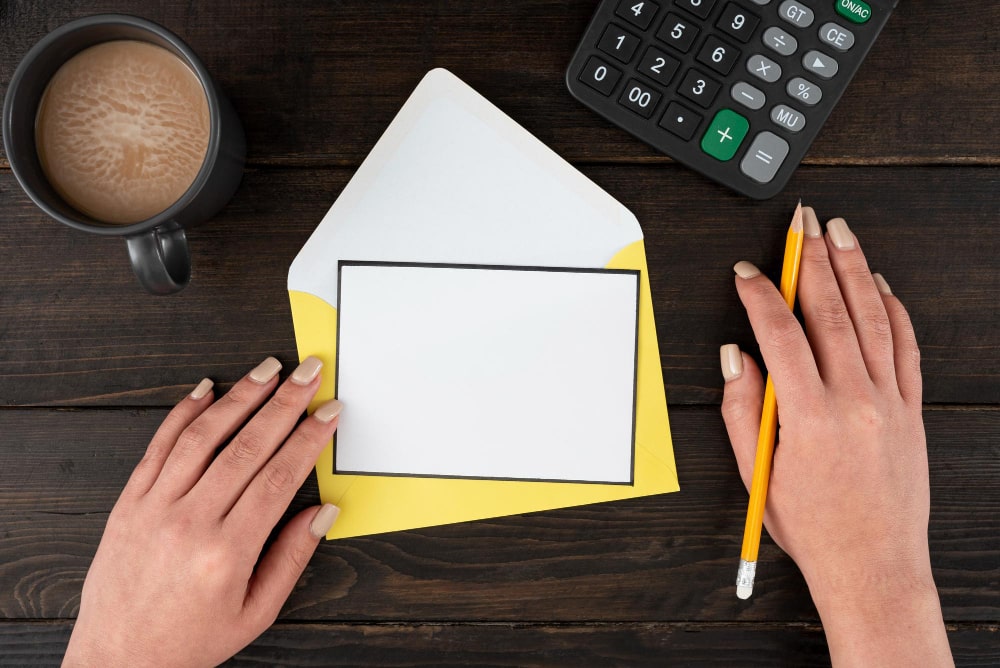Are you uncertain about how to address an envelope? Don’t worry; you’re not alone! In today’s digital age, where emails and instant messages dominate communication, the art of envelope addressing may seem like a lost skill. However, there are still plenty of occasions where a handwritten letter or card holds great significance. Whether you’re sending out invitations, thank-you notes, or personal letters, knowing how to address an envelope correctly adds a touch of elegance and professionalism.
Understanding the Importance of Proper Envelope Addressing
Before diving into the intricacies of envelope addressing, it’s essential to understand why it matters. Proper envelope addressing serves multiple purposes:
- Ensures the mail reaches the intended recipient without any confusion or delay.
- Reflects your attention to detail and respect for traditional etiquette.
- Adds a personal and heartfelt touch to your correspondence.
Now, let’s explore the step-by-step process of addressing an envelope:
Gathering the Necessary Supplies
Before you start addressing your envelope, make sure you have the following supplies:
- A high-quality envelope in an appropriate size for your letter or card.
- A reliable pen with ink that won’t smudge or bleed.
- A ruler or straight edge for aligning the lines.
- Clear adhesive tape or a damp sponge for sealing the envelope.
Positioning and Formatting the Address
The address on an envelope typically follows a specific format. Let’s break it down:
Sender’s Information
Start by writing your own name and address in the upper-left corner of the envelope. This will serve as the return address, ensuring the mail gets back to you in case it cannot be delivered to the intended recipient. Make sure to include your full name, street address, city, state, and zip code.
Recipient’s Information
Next, identify the proper location for the recipient’s information. Traditionally, this is placed in the center of the envelope, slightly lower than the return address. Here’s the proper order of the recipient’s information:
- Recipient’s Full Name
- House Number and Street Address
- Apartment, Suite, or Unit Number (if applicable)
- City, State, and Zip Code
Make sure to align the recipient’s information neatly, leaving enough space for postal workers to read the address clearly. You can use a ruler or straight edge to guide your lines and maintain consistent spacing.
Dealing with Special Addressing Situations
Addressing envelopes can become more complex when dealing with certain situations. Here are some common scenarios and how to handle them:
Addressing to a Business
When sending mail to a business, it’s important to include the company name and the recipient’s name, if known. If you’re unsure of the recipient’s name, you can address it to the appropriate department, such as “Human Resources” or “Customer Service.”</ p>
Addressing to an International Destination
For international mail, you’ll need to follow the proper addressing format for the specific country. Research the destination country’s postal guidelines to ensure accurate delivery. Additionally, remember to include any necessary customs forms or declarations.
Addressing to Multiple Recipients
When sending mail to multiple recipients within the same household or organization, you have a few options:
- List each recipient’s name on a separate line.
- Use “and” or an ampersand (&) between each recipient’s name.
- Include the words “and Family” to address the entire household.
Frequently Asked Questions about Addressing Envelopes
1. Can I use abbreviations when addressing an envelope?
While it’s generally recommended to spell out all words in an address, you can use common abbreviations for street suffixes (e.g., “St.” for “Street” or “Ave.” for “Avenue”). However, avoid using abbreviations for city names or recipient names, as it may cause confusion.
2. Should I use cursive or print handwriting for addressing envelopes?
The choice between cursive and print handwriting largely depends on your personal preference and legibility. However, it’s crucial to prioritize legibility over style to ensure the address can be read easily by postal workers.
3. Is it necessary to include a return address?
Including a return address is highly recommended. In case the mail cannot be delivered, having a return address allows it to be sent back to you. It also serves as a way for the recipient to identify the sender, especially if they are not familiar with your handwriting or the return address isn’t readily recognizable.
4. Can I use address labels instead of handwriting the address?
Using address labels is acceptable, especially if you have legibility concerns or a large number of envelopes to address. However, it’s essential to ensure the labels are printed clearly and accurately. Poorly printed or smudged labels may cause delivery issues.
5. How should I handle fragile or valuable items when addressing the envelope?
If you’re sending fragile or valuable items, it’s wise to add extra protection to the envelope, such as bubble wrap or padded envelopes. Additionally, consider insuring the package and using delivery services that offer tracking and proof of delivery.
6. Can I use decorative fonts or colors when addressing envelopes?
While adding a personal touch to your envelopes is a creative idea, it’s essential to prioritize legibility and professionalism. Decorative fonts or colors may hinder readability, so it’s best to use clear, standard fonts and black or dark blue ink.
Conclusion
Mastering the art of envelope addressing is a valuable skill that adds elegance and thoughtfulness to your correspondence. By following the proper format and paying attention to detail, you can ensure your letters and cards reach their intended recipients without any delay or confusion. So, the next time you’re preparing to send out invitations, thank-you notes, or personal letters, remember the tips and guidelines shared in this comprehensive guide.
Now that you’re equipped with the knowledge of how to address an envelope, share this article with others who may benefit from it. Return to markantony.org for more insightful articles
, guides, and resources to unlock knowledge and master skills.

